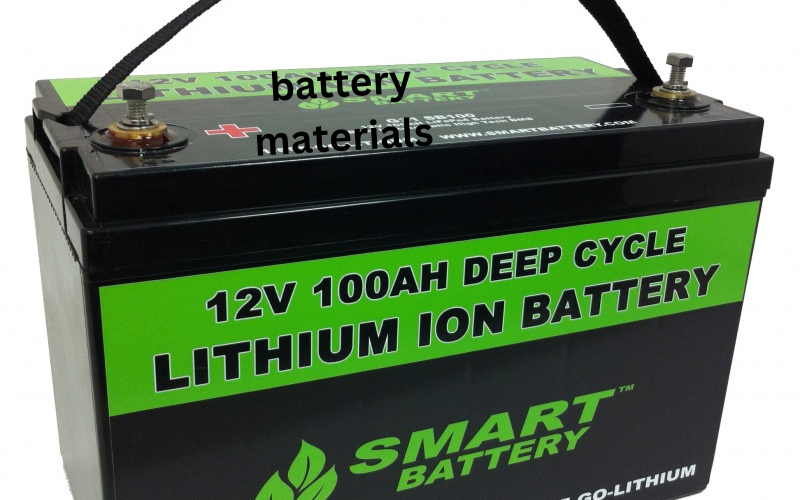Batteries are integral to numerous aspects of daily life, powering everything from small electronic devices to large vehicles. Understanding the materials that make up these essential energy sources is crucial for both consumers and professionals in the field. This article explores the most common used Battery Materials focusing on its properties, uses, and the role it plays in the functionality of different types of batteries.
Introduction to Battery Materials
Batteries consist of several key components, including the anode (negative side), cathode (positive side), electrolyte, and separator. The choice of material for each component significantly influences the battery’s performance, capacity, safety, and lifespan. While various materials are used in these components, lithium has emerged as the predominant material in many modern batteries.
Lithium: The Leading Material in Battery Technology
Lithium is a soft, silvery-white alkali metal. It is highly reactive and flammable, which makes it an excellent choice for energy storage in batteries. Lithium batteries are renowned for their high energy density, which means they can store a significant amount of energy relative to their size and weight. This feature is particularly valuable in applications like mobile phones, laptops, and electric vehicles, where both high energy storage and lightweight are critical.
Why Lithium is Popular
- High Energy Density
Lithium-ion batteries offer a superior energy density compared to other types, such as nickel-cadmium or lead-acid batteries. This makes them ideal for power-hungry devices and applications.
- Low Self-Discharge
Unlike other batteries that lose their charge quickly when not in use, lithium-ion batteries have a much lower rate of self-discharge. This trait contributes to their longevity and reliability.
- No Memory Effect
Some batteries need to be fully discharged before recharging to avoid memory effects, which can reduce their lifespan. Lithium-ion batteries do not suffer from this problem, making them more user-friendly.
- Flexibility in Design
The versatility of lithium allows for different types of lithium-ion batteries, each tailored for specific applications. For example, lithium cobalt oxide is commonly used in phones and laptops for its high energy density, while lithium iron phosphate offers better thermal stability and safety, making it suitable for electric vehicles.
Applications of Lithium in Batteries
Lithium’s properties make it suitable for a wide range of applications:
-
Consumer Electronics: Smartphones, laptops, tablets, and other portable devices rely on lithium-ion batteries for long battery life and efficient power consumption.
-
Electric Vehicles (EVs): The push towards sustainable energy has led to the adoption of lithium-ion batteries in the automotive industry. They are crucial in powering electric cars, offering an effective balance between weight, performance, and range.
-
Energy Storage Systems: Lithium batteries are used in large-scale energy storage from renewable sources like solar and wind. They help manage supply and demand, store excess energy during low demand, and release it during peak demand periods.
Environmental and Safety Considerations
While lithium is effective, it is not without challenges. The mining of lithium poses environmental risks, including water pollution and habitat destruction. The production and disposal of lithium batteries also raise concerns about sustainability and environmental impact.
Safety is another critical aspect, as lithium-ion batteries can pose fire risks if damaged or improperly handled. Advances in technology and stricter safety standards have reduced these risks, but they remain a significant consideration in the design and use of lithium-based batteries.
Conclusion
Lithium stands out as the most common Battery Materials, particularly due to its high energy density and efficiency. Its role in the advancement of technology and renewable energy solutions is undeniable, though it comes with environmental and safety challenges. As battery technology evolves, the search for more sustainable and safer alternatives continues. Meanwhile, lithium remains at the forefront of high-performance battery technologies, powering everything from everyday gadgets to cars and large-scale energy systems. Thank visiting Bloggersranking.com


